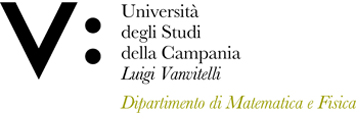Giovanni DE GREGORIO
Insegnamento di MICROSCOPIC NUCLEAR STRUCTURE
Corso di laurea magistrale in PHYSICS
SSD: FIS/04
CFU: 6,00
ORE PER UNITÀ DIDATTICA: 48,00
Periodo di Erogazione: Primo Semestre
Italiano
| Lingua di insegnamento | INGLESE |
| Contenuti | Programma sintetico: |
| Testi di riferimento | - Nuclear Forces - Author: R. Machleidt, doi:10.4249/scholarpedia.30710 |
| Obiettivi formativi | RISULTATI DELL'APPRENDIMENTO: |
| Prerequisiti | La conoscenza della Meccanica Quantistica e dei fondamenti della Fisica Nucleare |
| Metodologie didattiche | Il corso è strutturato in 40 ore di lezioni frontali e 12 ore per esercitazioni in aula. È vivamente consigliato partecipare alle lezioni, ma non obbligatorio, e interagire con l'insegnante. Il corso prevede lezioni con utilizzo della lavagna. Saranno inoltre forniti materiali didattici per ulteriori studi dopo le lezioni. |
| Metodi di valutazione | Durante il corso, la valutazione degli studenti verrà effettuata mediante test scritti che includono uno o due problemi relativi agli argomenti trattati durante un segmento specifico del corso. Agli studenti sarà consentito consultare un testo specifico durante i test scritti. |
| Altre informazioni | Nessuna |
| Programma del corso | • Il potenziale nucleare: panoramica storica, fondamenti teorici della Teoria dei Campi Efficaci (EFT), EFT non relativistica, simmetrie e conteggio di potenza, EFT per sistemi nucleari, EFT senza pioni, il sistema a onde s di due nucleoni, il sistema a tre nucleoni. |
English
| Teaching language | English |
| Contents | Synthetic Program: |
| Textbook and course materials | General reference books |
| Course objectives | LEARNING OUTCOMES: |
| Prerequisites | Knowledge of Quantum Mechanics and fundamentals of Nuclear Physics |
| Teaching methods | The course is structured in 40 hours of frontal lectures and 12 hours for classroom exercises. |
| Evaluation methods | During the course the students’ assessment will be performed by written tests that includes one or two problems about topics that have been covered during a specific segment of the course. Students will be allowed consulting one specific text during the written tests. |
| Other information | None |
| Course Syllabus | • The nuclear potential: historical overview, theoretical foundations of Effective Field Theory (EFT), nonrelativistic EFT, symmetries and power counting, EFT for nuclear systems, pionless EFT, the two-nucleon s-wave system, the three-nucleon system. |








